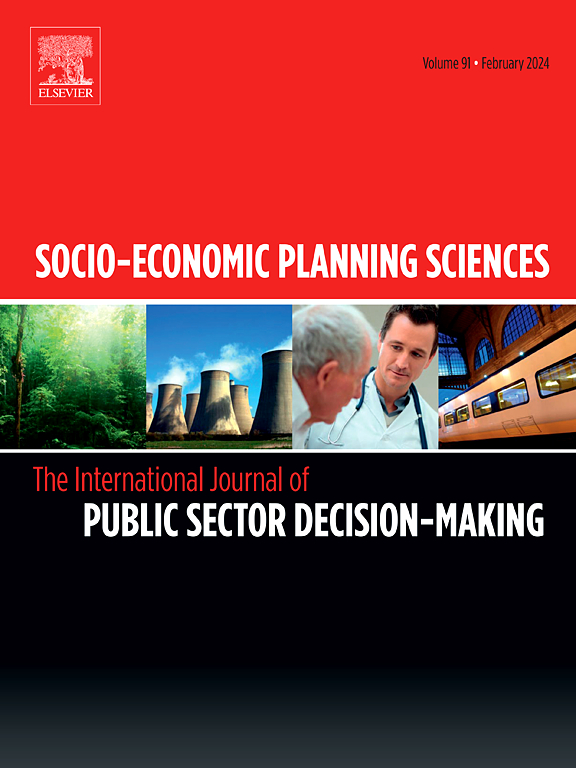Tracks to tech equity: How high-speed rail bridges the digital divide within cities? Prefecture-level evidence from China
IF 5.4
2区 经济学
Q1 ECONOMICS
引用次数: 0
Abstract
As a cross-regional infrastructure and major public project, high-speed rail (HSR) can significantly impact regional economic development, but few studies focus on its effects on intra-regional inequality. This study takes the opening of HSR stations as a quasi-natural experiment and employs a staggered difference-in-differences (DID) model to empirically examine the characteristics and mechanisms of HSR's impact on intra-city digital inequality. The results show that: (1) The opening of HSR stations reduces digital inequality within a city, mainly because it significantly enhances the digital development level of disadvantaged counties compared to advantaged ones. (2) Mechanism analysis indicates that HSR reduces the digital divide by stimulating innovation equilibrium, financial equilibrium, and local fiscal revenue equilibrium effects within a city. (3) Heterogeneity analysis shows that HSR significantly impacts internal digital inequality only in high-slope, economically underdeveloped, and peripheral areas. (4) Spatial tests reveal that HSR also helps reduce digital inequality within neighboring cities. This study not only enriches the theoretical understanding of the economic effects of HSR development but also provides policy insights on how regions can eliminate digital inequality and close intra-regional digital divides.
追踪科技股:高铁如何弥合城市内部的数字鸿沟?来自中国地级市的证据
高铁作为跨区域的基础设施和重大公共工程,对区域经济发展具有重要影响,但对其对区域内不平等影响的研究较少。本研究以高铁开通为准自然实验,采用交错差中差(DID)模型实证研究高铁对城市内部数字不平等的影响特征和机制。研究结果表明:(1)高铁站点的开通降低了城市内部的数字不平等,主要是因为高铁站点的开通显著提高了弱势县相对于优势县的数字发展水平。(2)机制分析表明,高铁通过刺激城市创新均衡、金融均衡和地方财政收入均衡效应来缩小城市数字鸿沟。(3)异质性分析表明,高铁仅在高边坡、经济欠发达地区和边缘地区显著影响内部数字不平等。(4)空间测试表明,高铁还有助于减少邻近城市之间的数字不平等。本研究不仅丰富了对高铁发展经济效应的理论认识,而且为区域如何消除数字不平等和缩小区域内数字鸿沟提供了政策见解。
本文章由计算机程序翻译,如有差异,请以英文原文为准。
求助全文
约1分钟内获得全文
求助全文
来源期刊

Socio-economic Planning Sciences
OPERATIONS RESEARCH & MANAGEMENT SCIENCE-
CiteScore
9.40
自引率
13.10%
发文量
294
审稿时长
58 days
期刊介绍:
Studies directed toward the more effective utilization of existing resources, e.g. mathematical programming models of health care delivery systems with relevance to more effective program design; systems analysis of fire outbreaks and its relevance to the location of fire stations; statistical analysis of the efficiency of a developing country economy or industry.
Studies relating to the interaction of various segments of society and technology, e.g. the effects of government health policies on the utilization and design of hospital facilities; the relationship between housing density and the demands on public transportation or other service facilities: patterns and implications of urban development and air or water pollution.
Studies devoted to the anticipations of and response to future needs for social, health and other human services, e.g. the relationship between industrial growth and the development of educational resources in affected areas; investigation of future demands for material and child health resources in a developing country; design of effective recycling in an urban setting.
 求助内容:
求助内容: 应助结果提醒方式:
应助结果提醒方式:


